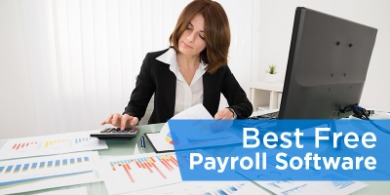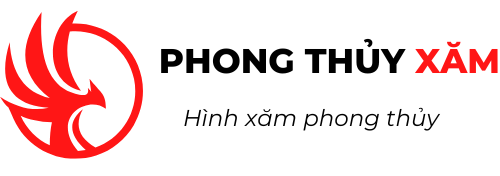Content

Equity includes money paid in by the owner , money the owner has earned but not taken from the business and other types of contributions like stock issued. Optical character recognition and bank feeds have come just short of fully automating the traditional bookkeeping process. Data entry can now happen as soon as you snap a photo of a receipt with your smartphone. And reconciliations happen almost in real-time through daily bank feed maintenance, making the end-of-month closing process a snap. Now one bookkeeper can manage the bookkeeping for several businesses in fewer than eight hours a day. One of the first challenges new business owners face is managing their business’s bookkeeping.
- Accountants measure leverage, not surprisingly, using their book value measures of debt and equity.
- Collateralized mortgage obligations are composed of mortgages—or, more precisely, mortgage-backed securities , which hold portfolios of mortgages .
- According to the California Society of CPAs (), every small business owner should develop a basic understanding of accounting.
- Fixed assets help a company make money, pay bills in times of financial trouble and get business loans, according to The Balance.
- Although accounts receivable, accounts payable and payroll do impact your books, some of these tasks can be managed by a person in your company other than your bookkeeper.
- It takes the form of a bond or note, paying income at a fixed rate for a set amount of time, until maturity.
But, as we discuss in an earlier post, it is essential that central banks ensure a commercial bank is solvent before making a loan. Given the relatively low net worth of most banks, this may not always be the case. Last, income tax is subtracted and the result is the bottom-line “net profit” (also called “net income”) or “net loss.” This is how much a business earned or lost during the accounting period. These are costs that support a company’s operations but are not linked directly to production.
What do accountants do every day?
Below are examples of common small businesses and what assets and liabilities they would have. The balance sheet should also be reviewed periodically to make sure a business’s liabilities are not growing faster than its assets. Current assets are important because they can be used to determine a company’s owned property.
Note that the fixed charges do not include discretionary expenses such as capital expenditures, which might be essential to the firm’s long term survival. Operating MarginEBIT ( 1- tax rate) / SalesThis ratio, since it is based upon income prior to interest expenses, is much more comparable across firms of different leverage. The treatment of patents as intangible assets, when they are acquired from others, does create an inconsistency. When patents are developed through internal research, they do not show up on the balance sheet. While they are tax deductible, they need to be tracked for cash flow purposes. In the US, depreciation has to be based on what was originally paid for the asset . In some high-inflation economies, firms are allowed to revalue assets.
Equity Security Holders
The U.S. trustee plays a major role in monitoring the progress of a chapter 11 case and supervising its administration. The U.S. trustee is responsible for monitoring the debtor in possession’s operation of the business and the submission of operating reports and fees.
What is a business asset summary?
A business asset is an item of value owned by a company. Business assets span many categories. They can be physical, tangible goods, such as vehicles, real estate, computers, office furniture, and other fixtures, or intangible items, such as intellectual property.
Founded in 1909, the California Society of Certified Public Accountants is the largest statewide professional association of certified public accountants in the United States. CalCPA offers a wide variety of benefits and services for CPAs and financial professionals. CalCPA, with 14 chapters located throughout the state, is committed to the education and betterment of our members and the profession. Double-entry accounting is a system of accounting that records each business transaction as two components .
Operating Activities
This chapter of the Bankruptcy Code generally provides for reorganization, usually involving a corporation or partnership. A chapter 11 debtor usually proposes a plan of reorganization to keep its business alive and pay creditors over time. People in business or individuals can also seek relief in chapter 11. In the normal course, excess spread cash flow goes to the SPV’s equity investors. If pool performance deteriorates further, triggers may also require that interest be diverted away from junior debt tranches to repay the senior-most tranche. As such, excess spread serves as a cushion for debt investors.
Generally, and subject to various defenses, the power to avoid transfers is effective against transfers made by the https://intuit-payroll.org/or within 90 days before filing the petition. But transfers to “insiders” (i.e., relatives, general partners, and directors or officers of the debtor) made up to a year before filing may be avoided. In addition, under 11 U.S.C. § 544, the trustee is authorized to avoid transfers under applicable state law, which often provides for longer time periods. Avoiding powers prevent unfair prepetition payments to one creditor at the expense of all other creditors. By law, the debtor in possession must pay a quarterly fee to the U.S. trustee for each quarter of a year until the case is converted or dismissed. The amount of the fee, which may range from $325 to $30,000, depends on the amount of the debtor’s disbursements during each quarter. You may be the proud owner of a vast vinyl record collection.
Cash Collateral, Adequate Protection, and Operating Capital
In fact, this equation depicts the What Are Assets And Liabilities? A Simple Primer For Small Businesses sheet’s key property, i.e. the balance sheet, should always be balanced. In other words, the Assets of the company should be equal to the Liabilities of the company. This is because everything that a company owns has to be purchased either from either the owner’s capital or liabilities. Assets, both tangible and intangible, are owned by the company. An asset is a resource controlled by the company and is expected to have an economic value in the future.

Good cash flow management means delaying payables as long as possible, while trying to accelerate collection of money owed to the company. This is money that a company owes to vendors for products and services purchased on credit. This item appears on the company’s balance sheet as a current liability, since the expectation is that the liability will be fulfilled in less than a year. Taxes, accrued expenses, debt, and deferred revenues are other examples of liabilities. Although this brochure discusses each financial statement separately, keep in mind that they are all related.




